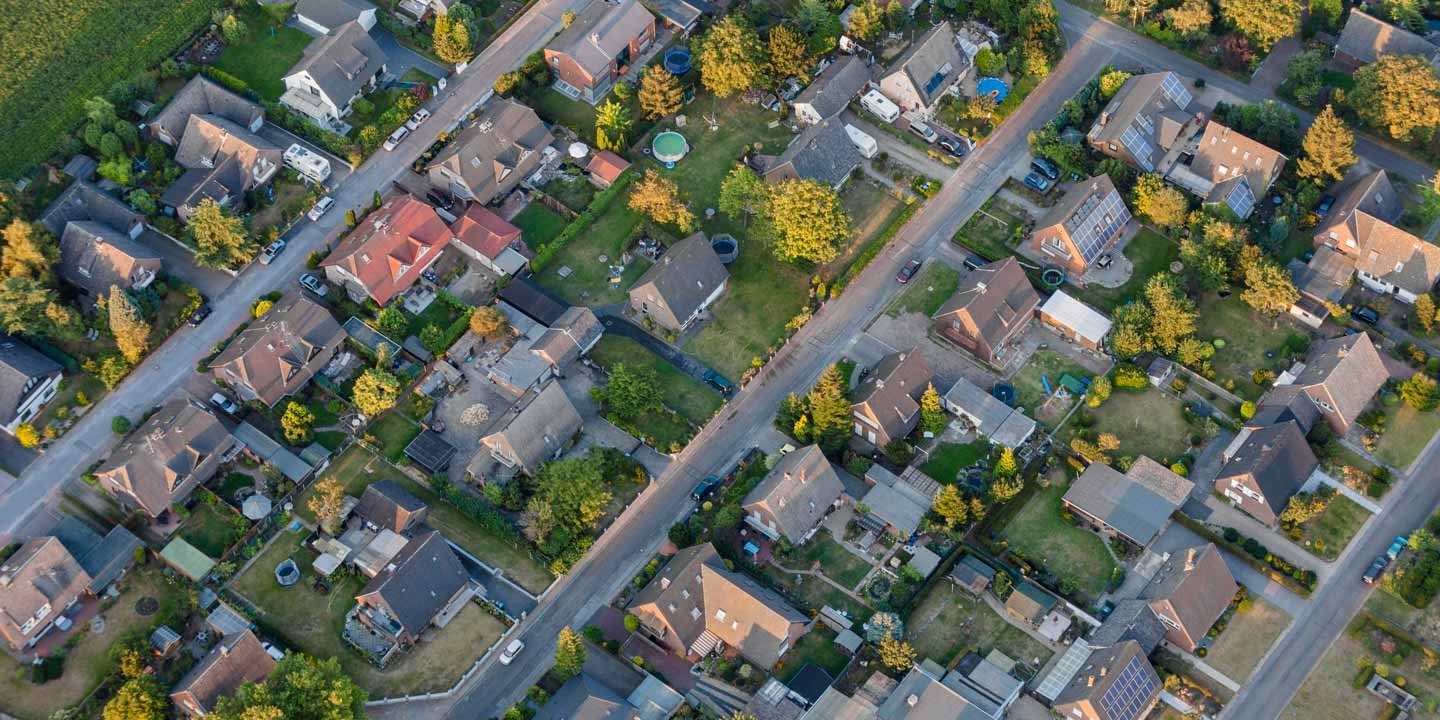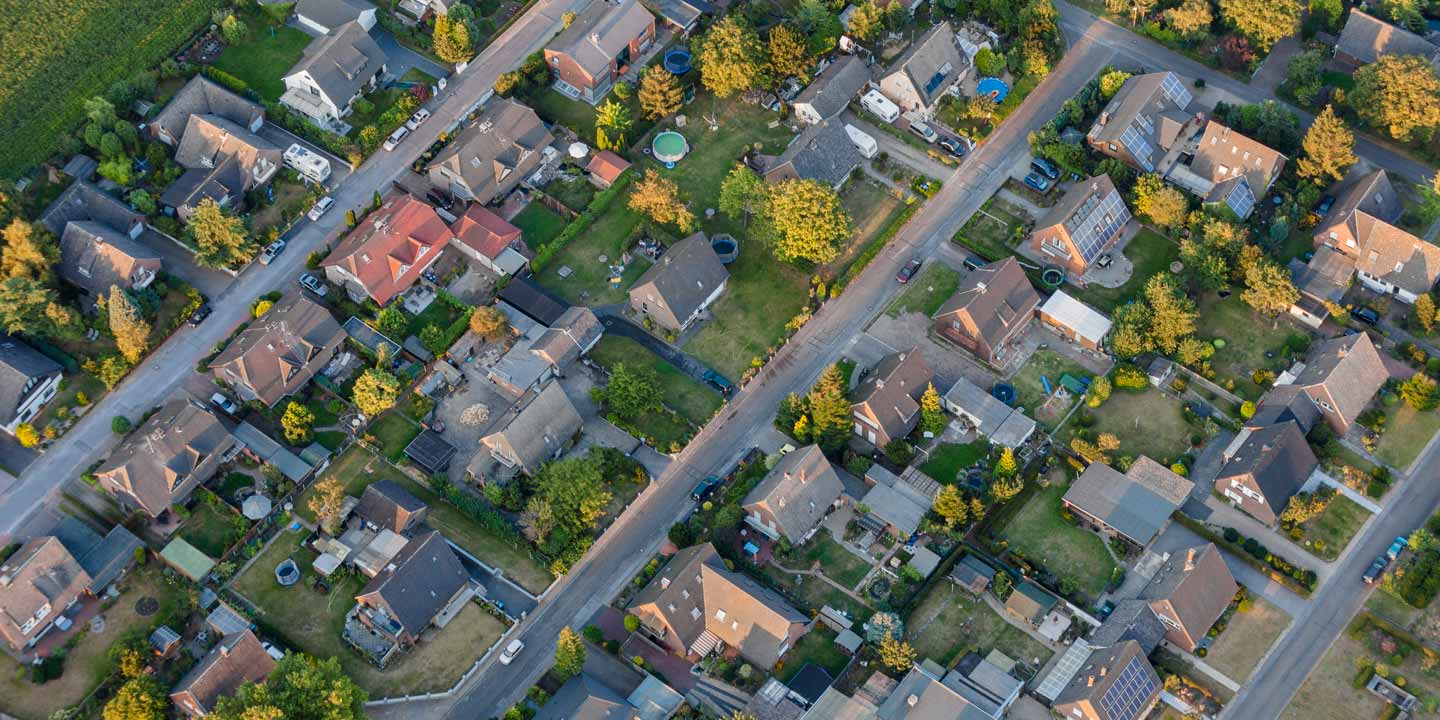

It’s not just the city that can benefit from smart, connected technologies. A number of applications are being rolled out that could transform the way we perceive the rural and suburban environment.
Smart city projects get a lot of media attention. But failure to consider rural and suburban areas in the smart revolution will create a huge imbalance in the built environment of tomorrow. That’s why planners, developers and government organisations are working on ideas to make towns and villages smarter and more connected.
The suburbs of tomorrow
The winds of change are beginning to blow through suburbia, which has found itself in the crosshairs of urban planners. The suburbs of tomorrow will utilise smart city technologies such as smart street lighting and pooled use of autonomous electric cars to minimise energy use and curb harmful environmental emissions.
It’s part of a bigger picture of making suburban life more ecologically-minded. Suburban communities will share resources like drone ports for deliveries. And without cars there will be no need for driveways and large garages, meaning more garden space. The benefits of this go beyond the aesthetic.
Improving the plant-to-concrete ratio will help to manage storm runoff and prevent flooding. This is vital given the increasingly extreme weather events that are anticipated in relation to climate change. It’s a positive broad-brush view of the future. But are there any more tangible examples of the way smart city technologies can be integrated into towns and villages?
Australia helming the journey towards smart suburbia
As part of their Smart Cities and Suburbs Program, the Australian government has set aside $50 million to support the delivery of innovative smart city projects that improve the liveability, productivity and sustainability of cities and towns across Australia.
3D mapping and augmented reality tools will allow the 3,500 residents of the town of Mullumbimby to visualise and comment on future developments of their town. Then there’s the mobile app that allows the community of Temora to track their water usage and costs via smartphones or tablets to set consumption targets, reduce costs and receive alerts if leaks are detected. Water consumption can also be shared with the local authority to better manage the civil infrastructure.
Or how about the plans to use sensors, satellites and drones to collect real-time environmental data that makes it easier to improve the ecological management of the Yellagonga wetlands? The Australian government has given the green light to dozens of smart schemes for the suburbs.
Remote healthcare for rural populations
Sometimes smart city technologies transcend cost-saving efficiency and enter the realm of life-saving. You need only look to China for proof. As with many nations, China has a problem with an uneven distribution of health services. The top 7.7% of medical centres handle half of the nation’s outpatient visits, yet are disproportionately located in the biggest cities. That’s bad news for anyone living in China’s rural villages.
Here to help is an all-in-one diagnostic station equipped with AI. These devices allow patients to self-administer a number of tests – or go to their local village clinic – including blood pressure, electrical activity of the heart and blood analysis. The results are uploaded automatically to the cloud where consultants can monitor any irregularities. Companies in China are also developing platforms that use AI to analyse x-rays to streamline medical diagnoses.
It’s a fabulous example of how smart systems can unite city, suburb and village in one fell swoop.
Smart farming for smart villages
The European Commission has proposed a number of ideas for fuelling the growth of smart villages. Among them include funding for the use of automated farming technologies and ideas to better improve the infrastructure for utilising green energies. The widespread use of robotic milking parlours and drones that fertilise crops are a real prospect of the near-future. It’s no overstatement that automated technology could spur the next agricultural revolution and completely economically re-energise the villages in which it’s deployed.
As long as the benefits are clear...
The smart city movement is still in relative infancy. There’s something of an intellectual land-grab afoot, where multi-billion dollar companies are willing to develop smart city applications in exchange for being front-of-mind when it comes to the associated benefits of smart city technologies.
Yet as the excitement dies down and the movement spreads outwards from urban hubs to the suburbs and beyond, a more legitimate business case must be presented if smart technologies are to gain traction. The wow factor is not enough. Local planners, local authorities and local residents need clear socio-economic benefits that save money and improve lives.
Square that circle and a future of smart suburbs and villages can begin to take shape.
Topics: smart streetlights, smart city

